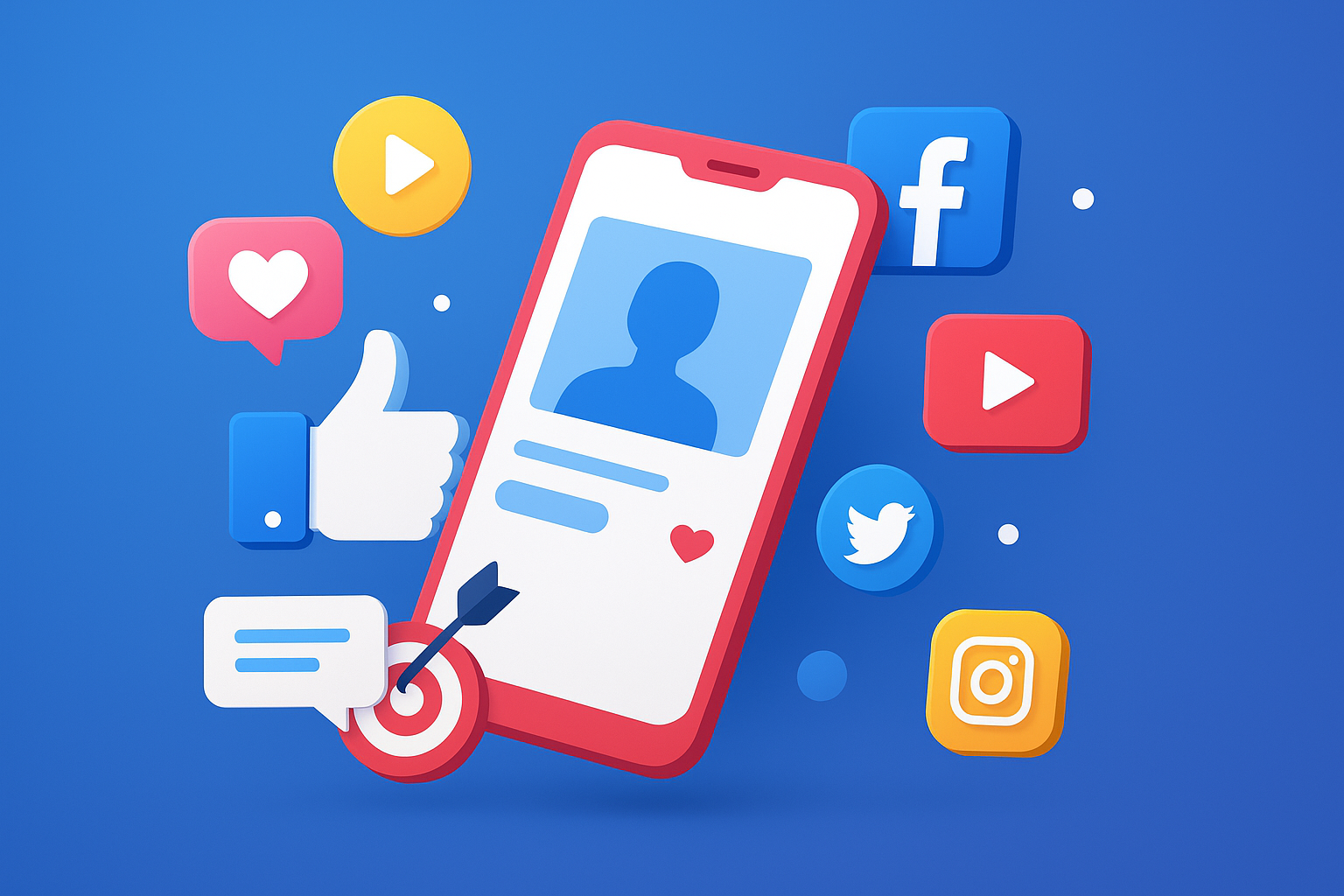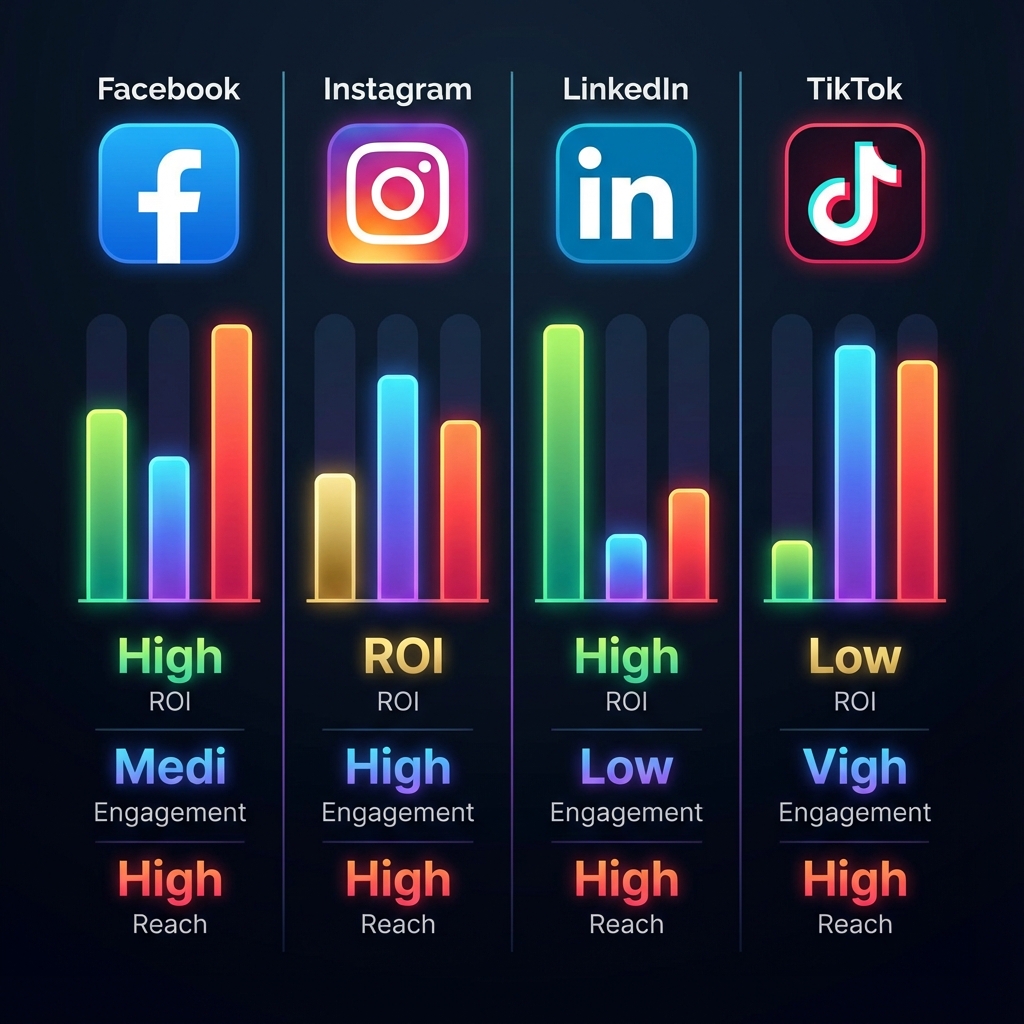Social Media Marketing (SMM): Boost Your Brand Online

Senior WebCoder

In the modern digital era, Social Media Marketing (SMM) has become a cornerstone for business growth. Social media platforms allow brands to reach millions of potential customers, build trust, and drive meaningful engagement.
Whether you are a startup, a small business, or a large enterprise, understanding and implementing SMM effectively can significantly impact your brand’s online presence and revenue.
What is Social Media Marketing (SMM)?
Social Media Marketing refers to the use of social media platforms such as Facebook, Instagram, LinkedIn, Twitter, TikTok, Pinterest, and YouTube to promote products, services, or content.
It involves both organic strategies (posting content, building communities, engaging followers) and paid strategies (social ads, influencer partnerships, sponsored content).
The main goal of SMM is to attract, engage, and convert your target audience while building brand authority and loyalty.
Why Social Media Marketing is Crucial
- Global Reach: Over 4.9 billion people use social media worldwide, giving brands unparalleled access to potential customers.
- Cost-Effective Marketing: Compared to traditional marketing, social media campaigns can be highly cost-efficient.
- Targeted Advertising: Advanced targeting options allow brands to reach audiences by location, interests, demographics, and behaviors.
- Brand Awareness & Loyalty: Regular engagement builds trust and long-term relationships with customers.
- Measurable Results: Social media platforms provide detailed analytics to measure ROI, engagement, and conversion.
Key Components of an Effective SMM Strategy
1. Audience Research
- Identify your target audience, their demographics, interests, online behavior, and preferred platforms.
- Use tools like Facebook Audience Insights, Google Analytics, and LinkedIn Analytics for data-driven decisions.
2. Content Strategy

- Create a content calendar to organize posts, stories, videos, and campaigns.
- Types of content:
- Educational: Blogs, tutorials, infographics
- Entertaining: Memes, short videos, reels
- Promotional: Product launches, discounts, testimonials
- Interactive: Polls, quizzes, Q&A sessions
📥 DOWNLOAD: "30-Day Social Media Content Calendar"
Ready-to-use template with:
- Daily content ideas
- Posting times for each platform
- Content mix recommendations (60% value, 30% engagement, 10% sales)
- Hashtag strategy
- Content batching guide
3. Platform Selection
- Facebook & Instagram: Visual content, ads, influencer marketing
- LinkedIn: B2B networking, lead generation, professional content
- TikTok & YouTube: Video marketing, trending content, entertainment
- Pinterest: Product discovery, lifestyle brands
Social Media Platforms: ROI Comparison by Business Type

B2B SaaS:
- Best: LinkedIn (highest ROI) > Google Ads > Email
- Average ROI: 3:1 to 5:1
- Recommended budget: 40% LinkedIn, 30% Google Ads, 30% Email
E-commerce:
- Best: Facebook/Instagram > TikTok > Google Ads
- Average ROI: 2:1 to 4:1
- Recommended budget: 50% Facebook/Instagram, 30% TikTok, 20% Google
Local Service Business:
- Best: Google My Business > Facebook > Instagram
- Average ROI: 4:1 to 6:1
- Recommended budget: 50% Google My Business, 30% Facebook, 20% Instagram
4. Paid Social Media Advertising
- Ads allow brands to reach specific audiences at scale. For more on paid strategies, check our PPC Marketing Guide.
- Common ad types:
- Carousel ads, video ads, sponsored posts, lead generation ads
- Tools: Facebook Ads Manager, LinkedIn Campaign Manager, TikTok Ads
Paid vs. Organic Social Media: What to Expect
| Metric | Organic Only | Paid + Organic (Mix) |
|---|---|---|
| Monthly Reach (1,000 followers) | 50-150 people | 2,000-5,000 people |
| Engagement Rate | 1-2% | 3-5% |
| Cost per Result | $0 + time | $0.50-2.00 |
| ROI | 1:1 (just time) | 2:1 to 4:1 (with spend) |
| Timeline to Results | 6-12 months | 2-4 weeks |
Recommendation: Start organic (free) + invest ₹500-1,000/month in ads to accelerate growth.
5. Community Engagement
- Respond to comments, messages, and mentions promptly.
- Encourage user-generated content to build loyalty.
- Host live sessions, AMAs (Ask Me Anything), and contests to boost interaction.
6. Analytics & Optimization
- Track key metrics:
- Engagement Rate: Likes, comments, shares
- Click-Through Rate (CTR): Traffic driven to your website
- Conversion Rate: Leads or sales generated
- Tools: Hootsuite, Buffer, Sprout Social, Google Analytics
- Use insights to refine content, posting times, and ad targeting.

Key Metrics to Track for Each Platform
Facebook/Instagram
- Reach (how many see your content)
- Engagement Rate (likes + comments + shares / reach)
- Click-Through Rate (CTR)
- Conversion Rate (visitors to customers)
- Cost Per Result
- Impressions (views)
- Engagement Rate
- Follower growth rate
- Lead quality
- Cost per lead
TikTok
- Views
- Completion Rate (how far people watch)
- Share rate
- Follower growth
- Conversion rate
Benchmark: If not hitting targets within 8 weeks, adjust strategy.
Advanced SMM Techniques
-
Influencer Marketing
Partner with influencers to leverage their audience for brand promotion. Micro-influencers often have higher engagement rates. -
Retargeting Ads
Target users who have interacted with your brand but haven’t converted yet. -
Social Listening
Monitor brand mentions and industry trends to adjust strategy proactively. -
Automation Tools
Tools like Later, HubSpot, and Buffer help schedule posts, manage campaigns, and generate analytics reports efficiently. -
SEO Integration
Optimize social content with keywords, hashtags, and meta descriptions to boost discoverability. Learn more in our SEO improvement guide.
Live Example: Successful Social Media Marketing Campaigns
1. Nike
Nike uses Instagram and YouTube to share inspirational stories, athlete endorsements, and user-generated content. Their campaigns create emotional engagement and drive both online and offline sales.
2. Coca-Cola
Coca-Cola’s #ShareACoke campaign personalized bottles with customer names, which went viral across multiple social platforms, increasing brand engagement globally.
3. Glossier
Glossier heavily relies on community-driven content, encouraging customers to share their experiences, which builds trust and loyalty.
Tools for SMM Success
- Content Creation: Canva, Adobe Spark, Figma
- Scheduling & Automation: Buffer, Hootsuite, Later
- Analytics: Google Analytics, Sprout Social, HubSpot
- Ad Management: Facebook Ads Manager, LinkedIn Ads, TikTok Ads
📥 DOWNLOAD: "Complete Social Media Strategy Workbook"
Includes:
- Audience research template
- Content calendar (30 days)
- Posting schedule by platform
- Engagement tracking sheet
- ROI calculation template
Common Mistakes to Avoid
- Posting without a strategy or schedule
- Ignoring engagement and community interactions
- Focusing only on follower count, not engagement or conversions
- Not analyzing performance data to optimize campaigns
- Overlooking platform-specific content formats
How FUEiNT Helps with Social Media Strategy
We don't just run ads. We:
- Audit your current social presence
- Identify your best-performing platforms
- Create a data-driven content strategy
- Run paid campaigns optimized for your goals
- Track and optimize continuously
Result: Our clients see 150-300% increase in leads/sales from social.
Ready to Launch Your Social Media Strategy?
Social media requires consistent effort, the right strategy, and continuous optimization. Many businesses waste time on platforms where their audience doesn't exist.
FUEiNT helps companies:
- Identify which platforms your audience uses
- Create content calendars that drive engagement
- Run paid campaigns that convert
- Measure and optimize for ROI
Result: Average 150% increase in lead generation from social media.
→ Get Your Free Social Media Audit
We'll analyze your current efforts and recommend specific changes to increase engagement and conversions.
